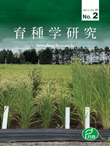Volume 25, Issue 2
Displaying 1-10 of 10 articles from this issue
- |<
- <
- 1
- >
- >|
Research Paper
-
2023Volume 25Issue 2 Pages 109-122
Published: December 01, 2023
Released on J-STAGE: December 15, 2023
Advance online publication: July 04, 2023Download PDF (1542K) Full view HTML -
2023Volume 25Issue 2 Pages 123-139
Published: December 01, 2023
Released on J-STAGE: December 15, 2023
Advance online publication: July 04, 2023Download PDF (6777K) Full view HTML -
2023Volume 25Issue 2 Pages 140-149
Published: December 01, 2023
Released on J-STAGE: December 15, 2023
Advance online publication: July 13, 2023Download PDF (1382K) Full view HTML
Note
-
2023Volume 25Issue 2 Pages 150-157
Published: December 01, 2023
Released on J-STAGE: December 15, 2023
Advance online publication: September 13, 2023Download PDF (3696K) -
2023Volume 25Issue 2 Pages 158-165
Published: December 01, 2023
Released on J-STAGE: December 15, 2023
Advance online publication: October 05, 2023Download PDF (4306K)
Feature Article
-
2023Volume 25Issue 2 Pages 166-169
Published: December 01, 2023
Released on J-STAGE: December 15, 2023
Advance online publication: August 22, 2023Download PDF (395K) -
2023Volume 25Issue 2 Pages 170-176
Published: December 01, 2023
Released on J-STAGE: December 15, 2023
Advance online publication: October 21, 2023Download PDF (495K) -
2023Volume 25Issue 2 Pages 177-180
Published: December 01, 2023
Released on J-STAGE: December 15, 2023
Advance online publication: October 05, 2023Download PDF (1609K) -
2023Volume 25Issue 2 Pages 181-186
Published: December 01, 2023
Released on J-STAGE: December 15, 2023
Advance online publication: October 17, 2023Download PDF (3137K) -
2023Volume 25Issue 2 Pages 187-189
Published: December 01, 2023
Released on J-STAGE: December 15, 2023
Advance online publication: October 18, 2023Download PDF (1093K)
- |<
- <
- 1
- >
- >|
